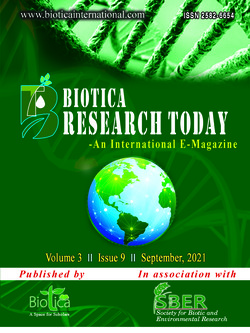
Dung Beetles
Nisha Pradeepa, K.*
S. Thangapazham Agricultural College, Vasudevanallur, Tenkasi, Tamil Nadu (627 760), India
A. Subash Chandra Bose
S. Thangapazham Agricultural College, Vasudevanallur, Tenkasi, Tamil Nadu (627 760), India
D. Indhu Mathi
S. Thangapazham Agricultural College, Vasudevanallur, Tenkasi, Tamil Nadu (627 760), India
DOI: NIL
Keywords: Beetles, Dung rollers, Saprophages, Scarabaeidae
Abstract
The dead bodies of plants and animals are a rich source of organic matter that provides nutrition for many insects called saprophages. The suborder Scarabaeinae has coprophagy as a characteristic of most of its species. Dung rollers are one of the important insect saprophages that decomposes the waste. They derive their nutrients largely by eating microbes or colloids suspended in dung. This article explains the role of dung beetles in the functioning of the ecosystems.
Downloads
not found
Reference
Capinera, J.L., 2008. Encyclopedia of Entomology. Vol 4. 2nd Edition. Springer Publishers, p. 4346.
Dacke, M., Baird, E., Byrne, M., Scholtz, C.H., Warrant, E.J., 2013. Dung Beetles Use the Milky Way for Orientation. Current Biology 23(4), 298-300. doi: 10.1016/j.cub.2012.12.034.
Thomas, M.C., 2004. Beetles (Coleoptera). In: Encyclopedia of Entomology. Springer, Dordrecht, p. 2580. https://doi.org/10.1007/0-306-48380-7_443.
